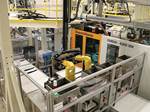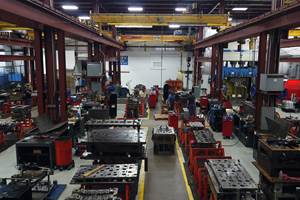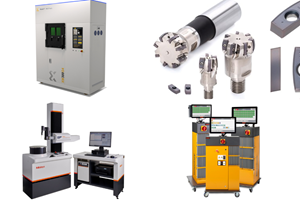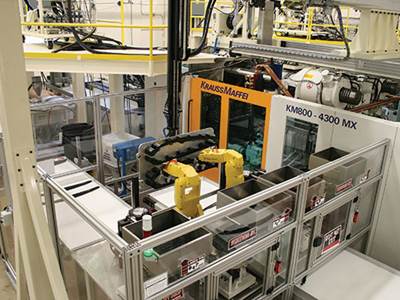Costing Challenges and Strategies
Mold manufacturers should automate the mold costing process to improve quote accuracy and accelerate RFQ response.
With manufacturers putting increased pressure on their suppliers for cost savings and efficiencies, mold manufacturers are being challenged to produce consistent, accurate product cost quotes. These challenges include the need for:
Increased precision and accuracy. No matter what your company’s processes are for costing molds, chances are there is a sizable discrepancy with actual costs. It’s imperative to have a solid understanding of actual costs to make sure you are winning new business that is profitable.
Faster response times. The ability to turn quotes around quickly is a huge competitive advantage for mold manufacturers, but this is very difficult to do accurately without the right tools.
Reduced overhead costs. It’s expensive and time-consuming to turn around a detailed quote, especially if it’s not accurate.
Need for Visibility and Control
For years, manufacturers put very little scrutiny on their tooling budgets, partly because tooling costs were considered a mystery. Quotes for tooling were (and often still are) very high-level, broken down only by material and labor costs, and there are very few cost standards to measure against.
Today though, as the cost of tooling rises and pressure mounts for increased profitability, manufacturers are asking for a greater degree of granularity in tooling estimates, forcing mold manufacturers to take a much more critical look at their tooling estimates. This can make it difficult to turn quotes around quickly.
For most mold manufacturers, part and product cost quoting is a time-consuming process, typically done manually with homegrown, template-type solutions developed in Microsoft Excel or similar database applications. These costing tools usually require highly experienced professionals with years of expertise in tooling and moldmaking to develop a quote, and each individual might be using different estimation methodologies, and material and labor costs. Mold manufacturers need to automate and accelerate this process so that they can respond more quickly and accurately to RFQs, and ultimately drive increased revenues.
Managing the Cost of Cost Estimating
To effectively manage tooling costs, mold manufacturers must address the key challenges described above. This involves standardizing the cost estimating process to ensure consistency and minimize the manual intervention required. This in turn requires a deep understanding of the key variables related to tooling and moldmaking costs, including how they might change from one region to another, and the cost variables of different machine and process capabilities. Ideally, this knowledge is built into the system you use versus having to rely on a select few experts. To generate highly accurate and detailed cost estimates, mold manufacturers should look for systems that can be used by non-costing experts and that have the following capabilities:
1. Automatically calculate tooling costs at a very detailed level from a 3D CAD model.
2. Produce a detailed tooling bill of materials (BoM) that includes:
• Physical characteristics—part size, mold size, material weight, actions, lifters, number of drops, etc.
• Materials and purchased items—core and cavity plates, ejector box, actions and inserts, stop pins, EDM carbon, etc.
• Labor and machine times—design, machining, assembly, finishing, tryout, labor hours by process, CMM inspection, etc.
• Generate highly detailed, first-pass tooling estimates without requiring that the user have any tooling knowledge or expertise. This enables fast, efficient and accurate responses to requests for rough estimates.
3. Offer automated tooling estimates each time a component is cost. This provides non-tooling experts with quick access to precise estimates in real time.
4. Provide automated bulk costing with a wide range of user inputs, or predefined “process setup options” or defaults that allow you to very quickly cost the tooling of many parts.
• Include refinement tools for final adjustments by tooling experts.
• Provide tool amortization.
• Can be set up and calibrated to specific company, equipment, rates, manufacturing rules and operations.
Case in Point
An injection mold and tool manufacturer was struggling to quickly and consistently generate accurate quotes, and specifically to address these challenges within its injection mold operations.
Engineering and producing prototypes and production molds across a diverse range of industries and broad range of injection mold sizes (from 50 to 3,300 tons) was often time-consuming and expensive. There could be as high as a 20-percent variation in the estimate–to-actual costs. Specialized cost experts with detailed knowledge of design, machining and fabrication processes and costs were needed to generate cost estimates. Even then, the manual processes used were very cumbersome and often based on inaccurate, historical cost information.
The company deployed an enterprise software-based product cost management solution to automate its quote-generation processes and reduce both the time and costs associated with generating cost estimates. In many cases, entry-level employees could generate the cost estimates in a fraction of the time it might take the experts to do manually, ultimately reducing overhead costs by as much as 55 percent. Moreover, the company has improved its RFQ turnaround time by 300 percent, with little to no variance against actual costs. Now its ability to quickly and accurately generate RFQs is a competitive advantage for the company.
Standardizing the Process
Tooling costs have become an increasingly important area of focus as moldmakers and manufacturers look for new opportunities to cut product costs without sacrificing product quality. The challenge has been the lack of effective tools to provide the level of detail necessary to truly understand those costs and how to impact them. When evaluating solutions to manage and estimate tooling costs, it is very important to standardize the process without limiting your ability to reflect the unique capabilities and characteristics of your specific manufacturing environments. Look for solutions that work with your 3D CAD system, PLM software and other manufacturing execution systems already in place. The more visibility into costs early on in the process, the easier it is to consistently and accurately reduce those costs, streamline decision-making and accelerate time to market.
Related Content
Indiana Mold Builder Decatur Mold Offers a History of Grit and a Future of Innovation
Decatur Mold Tool and Engineering Inc. serves as a tooling tour guide, helping busy tooling managers reduce uncertainty, lighten workload.
Read MoreHow to Analyze and Optimize Cutting Conditions to Reduce Cycle Time
Plastic injection mold design and manufacturing company puts NC program optimization software module to the test. The results were surprising.
Read MoreTake Time to Save Time: 6 Steps in Mold Design to Reduce Back-End Troubleshooting
Westminster Tool shares how the one week it typically takes to perform these six steps in the design phase can save three weeks or more in an overall tool build.
Read MoreProducts and Services for Multiple Moldmaking Needs
New year, new technology roundup! Featured here is a collection of product offerings, from profile milling cutters to industry-specific CAD/CAM software to innovative hot work tool steels.
Read MoreRead Next
Systems Engineering Meets Moldmaking
A combination of systems engineering and systems integration approaches improves communication, which yields better mold manufacturing overall.
Read MoreReasons to Use Fiber Lasers for Mold Cleaning
Fiber lasers offer a simplicity, speed, control and portability, minimizing mold cleaning risks.
Read MoreHow to Use Strategic Planning Tools, Data to Manage the Human Side of Business
Q&A with Marion Wells, MMT EAB member and founder of Human Asset Management.
Read More





















